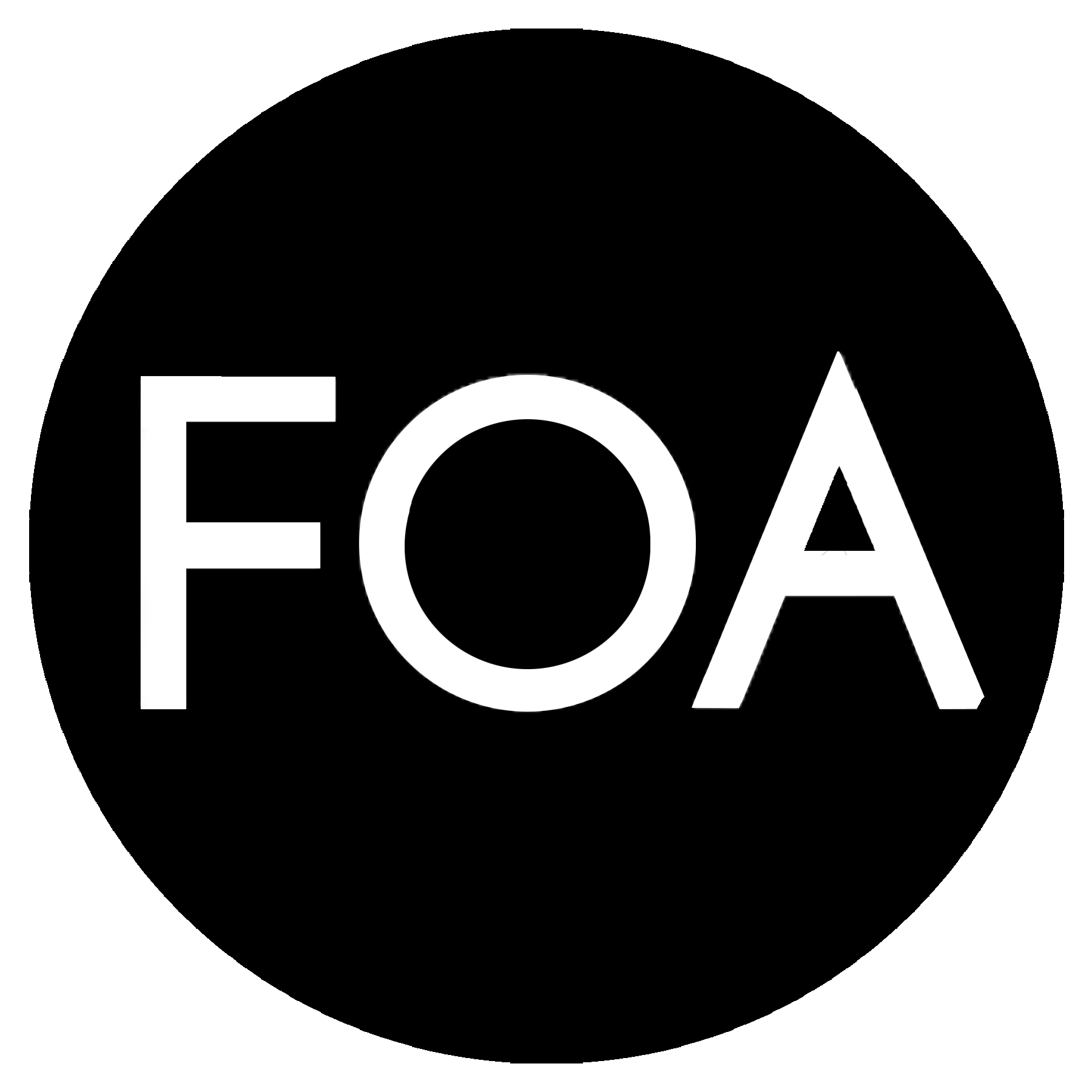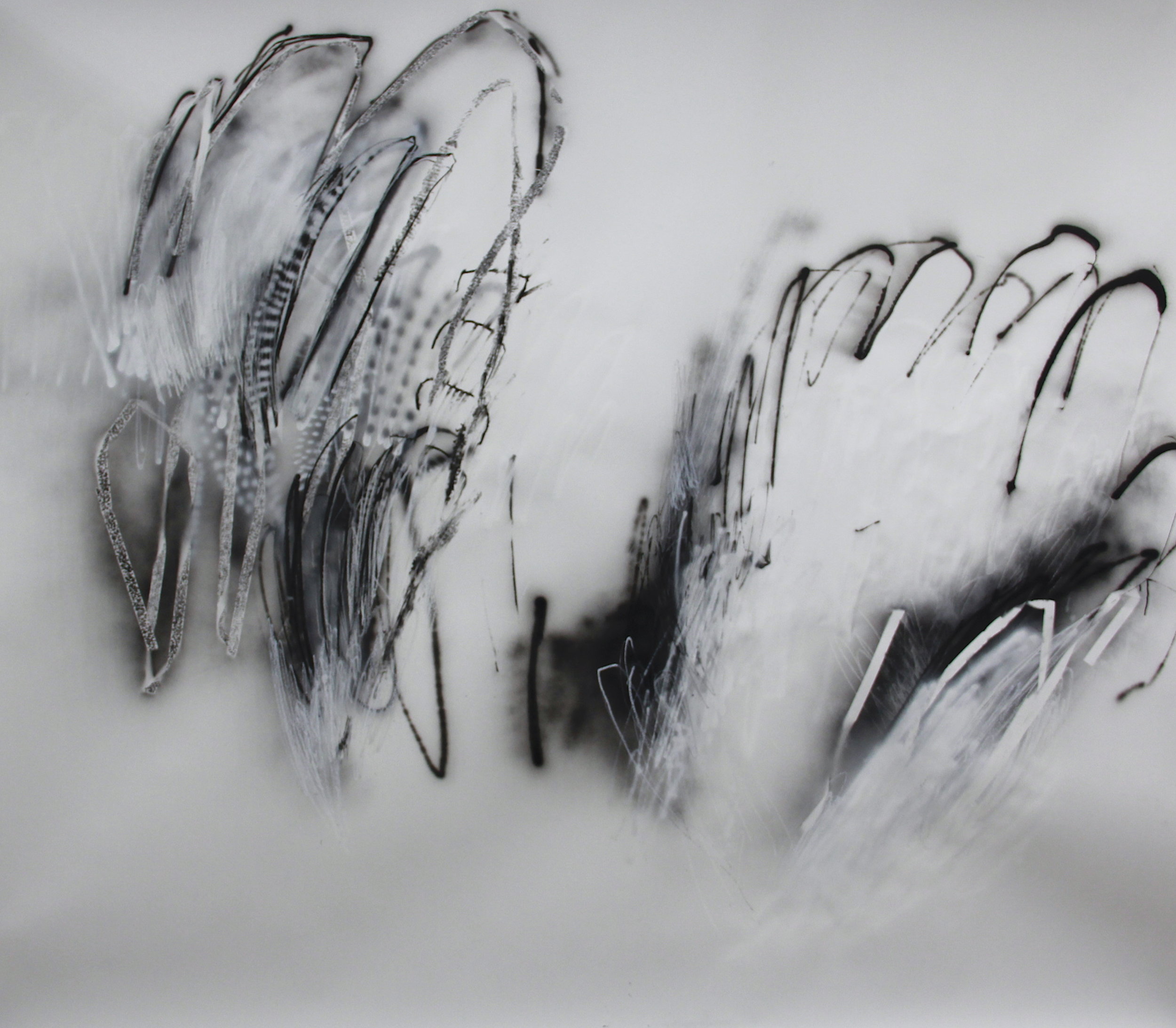Painting with Objects: Cailtyln Wilson
Caitlyn Wilson
With More To It, 2017
charcoal, conte, graphite, acrylic, and airbrush on paper, 96 x 108in.
Conversation between guest juror, Rachel Fischer, and artist, Catilyn Wilson. Interview originally published in Spring 2017
R: You’re a student right now in Seattle. Is that right?
C: Yes, that’s right. I’m a graduate student at the University of Washington
R: And before that, you were in Tennessee?
C: Yes, I lived just north of Nashville in a town called Clarksville. I went to Austin Peay State University.
R: I’ve visited Seattle, and there was a lot of craft influence. Is this something that you’ve been aware of while you been there and has it influenced your work?
C: I’m aware of the glass art scene in Seattle, not so much the craft scene. I don’t think craft, in particular, has influenced my work. I would say that, in Seattle, what influences my work the most is the SoDo area with all of the beautiful buildings and industrial materials. I think it has influenced my work a lot. There was also a visiting artist here at the University of Washington named Charles Spurrier who came and gave a lecture and talked about painting with objects. He got me to think about making a drawing or painting with objects instead of traditional paint materials.
R: It seems that your current work has shifted a lot from the earlier things I saw on your website. I personally respond to the hybrid qualities of your work that break down traditional ideas of what is a drawing what is a painting. The Untitled sculpture piece you submitted is very much a three-dimensional object that has a spatial relationship with everything.
C: I’ve been thinking a lot of the intention of an idea that I have and then going about making that intention as clear as possible with the medium I choose. I ask myself, “should this be realized through painting, drawing, or something else?” I’ve been asking myself this question recently and that is probably why my work has changed as much as it has.
R: In your program, is there a lot of intermingling between the different art departments? Are they separate or all together?
C: It’s all technically separate. I’m in the painting and drawing department and there’s a photo media and 3D4M program. There is limited opportunity for all of us to be together as our studio buildings are all separate. As far as working together to make art, that doesn’t really happen. However, I would say that in the painting and drawing department, if you want to make a sculpture or installation or anything besides painting and drawing, it’s encouraged that you do what you feel like you should be doing. I enjoy that in our Painting and Drawing department there’s no pressure to define yourself as a “painter”, you really can do whatever you want.
R: In your artist statement you spoke about several different historical influences. The history of painting cuts a broad swath between what is painting and what isn’t. That is still a relevant conversation today that people are challenging and expanding upon, and I can see that in your work. Is a drawing still a drawing when it becomes so big that it turns into an environment? It seems that you’re very aware of countering those questions. Maybe it’s not a combative stance, but just something that you’re aware of.
Untitled, 2017
C: I’ve been thinking about spatial relationships within a drawing and what they mean in relation to your body. More recently, my drawings have gotten so large because I’ve been thinking about the spatial relationship with the thing that I’m creating, myself, and the drawing becoming an environment. How could that work? I’m exploring all these different avenues and letting these things take me in one direction and then going crazy with it and not being afraid to make a mistake or go out of my comfort zone. A lot of times when I do that, something really exciting happens.
R: I was excited to look at your work because it seems really fresh. The word “physicality” is super important. When a drawing becomes so big, then you have to have a physical relationship with how you’re moving around it. The sculptural piece is interesting to me because it’s very much something that is in the round and the black lines connecting it to the ceiling and floor seem to be related to drawing. Do you feel like that?
C: Absolutely. I view it as a drawing. I just think that sometimes it’s easier to explain it as a sculpture or installation. When I was making it, the physical challenge of stretching it from the floor to the top was really important- that tension and how the lines were being pushed by the mass that in the center which is made out of a space blanket that’s wrapped around batting and bubble wrap. It’s like squeezing this very vulnerable thing. I felt like the space blanket was referencing metal or something that’s hard and cold. No matter what medium I am using, it is all coming from the same thought process.
R: The space blanket and the batting makes me think of an insulating feeling, but you’re squeezing it into this compressed thing. I think that relationship is interesting. It’s a nice juxtaposition.
C: Like in the drawing, With More To It, there are areas of space where things are pushing forward and back, and you’re not sure what’s happening within that space. I feel like the sculptural piece was that drawing, or that drawing as a sculpture. With the untitled piece, I’m still thinking about space in relation to the body and how my intention can be clear in the work, and what medium should I use go about doing that.
R: So each thing you view as being different dialects of the same language? They are all speaking the same language, but this material is the clear way to articulate this or that. Is that how you think of it?
C: Absolutely. Bridget Riley wrote “Painting Now” where she compared painting to translating a text. That’s definitely how I think about going about making work. You have this text or something from a non-material reality that you have to bring into actual visual reality, and what is the most appropriate material to do so.
R: So it’s specific for each for each moment?
C: Yes. I’m hoping that each piece has it’s own emotional tenor that is clear when you look at it.
R: Another piece that I was interested in that I can see how your work has evolved is Painting, Not Painting that has different layers that break the frame of the rectangle. I can see there’s some different materials in there and layering. You can talk about that?
C: I was thinking about painting with an object, but also.. what is painting anymore? I had all these materials laying around from other works and a blank canvas. I decided to use these materials and make a painting out of them.
R: That one really speaks to physicality. It’s really interesting because it has a sense of history to it because you can see the layering process and what is hidden and what is revealed. The way I describe your work simultaneously showing past and future states. It’s mid-transformation. Painting, Not Painting is really raw, and seems unabashedly to reveal it’s components, but it’s more than the sum of it’s parts. It’s a whole thing, but upon investigating it closer, you can see a layering process happening.
C: It was definitely a different physical process for me to take and assemble the materials as a painting you hang on the wall. Ripping things off and putting them back together is much different than making a drawing, but has a similar thought processes.
R: I really liked this statement at the end of your artist statement: “Often objects embody a dilemma more so than a resolution”. I think it relates to what we were just talking about and I was wondering if you could expound upon that.
C: I try not to complete a painting by pictorial conventions, but rather imagine what I’m contextualizing and bring that into reality. I want to make it out of something rather than about something.
R: It seems that you’re not as much interested in narrative as in happenings. It seems to be grasping at ephemeral things that are hard to translate.
C: I absolutely think so. When I paint, I feel like I’m re-experiencing an experience that I’ve had. But, by the time you re-experience an experience, the way you remember it or how you feel about it may have changed. It’s never the same experience that’s recreated because it is affected by time and how you’ve changed.
R: When you’re making your work and thinking about this initial motivation, does a lot of that feel guttural or are you thinking about a specific moment in time?
C: I think it’s both. Sometimes it’s an actual moment in time and how I feel about it in the current moment. The mark, gesture, or material is a result of the feeling. It’s kind of like how Harold Rosenberg talks about recording an event. I feel like I’m re-experiencing the event on the canvas with the material. It’s important for me to have the feeling as I’m making the painting.
R: Whenever you’re making these pieces, when do you decided the piece is resolved?
C: That is such a hard thing. Almost any work, especially with abstraction, when do you stop? How I decide this is when I have arrived at some sort of clarity within the work. I want my initial intentions to be clear. I have to ask myself what I want from it, work through the problem, and overcome the confusion to arrive at that point of clarity.
R: I think clarity is a good word. Do you ever feel like a piece reaches the point of completion when it can actually be dependent from your original motivations?
C: I hope that when someone sees the work there’s some kind of resonance. For me, when I see a Mark Rothko painting or a Richard Serra sculpture, I feel like you can almost hear a sound that the work is making because it’s resonating so much. At some point, I hope to get to that kind of clarity and resonance with my own work. I don’t think that my particular experience or original motivation is evident within the work, but it fuels it.
R: Where do you see your work going?
C: After submitting Untitled, I had an idea for an installation for an entire room. It’s still dealing with space in relationship to the body. I’m also working on a drawing that deals with space in relation to the body, but this one is more atmospheric. The mark making is still very important, however it’s more about the overall feeling you get from it. I will continue working in several different mediums.


